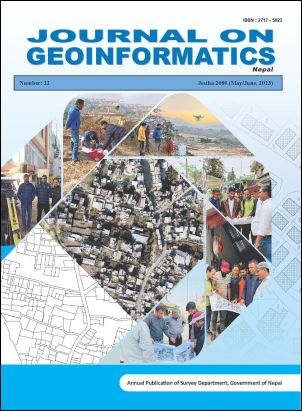Assessment of Landcover Change of Kathmandu District, Nepal
DOI:
https://doi.org/10.3126/njg.v22i1.55119Keywords:
Landcover, Google Earth Engine, Remote Sensing, Urban PlanningAbstract
It is necessary to understand land cover changes for managing and monitoring natural resources and development, especially urban planning. Remote sensing and geographical information systems (GIS) are proven tools for assessing land use and land cover changes, which helps planners advance sustainability. Google Earth Engine is used in this study to detect land cover changes in one of the rapidly growing cities in Nepal. It was discovered that from 2013 to 2019, 0.26% of the total area was increased by forests, 3.28% by settlement, 0.015% by wetland, and 1.21% by otherland. The overall accuracy and kappa coefficient of the landcover change study for 2013 are 80% and 0.74, and the overall accuracy and kappa coefficient of the study of landcover change for 2019 are 83.33% and 0.78. The status of the landcover change in Kathmandu district before and after the earthquake showed that forest covers the highest area, followed by cropland, and then settlement in both years 2013 and 2019. Forest, settlement, wetland, and other land have increased by 0.26%, 4.54%, 0.015%, and 1.21%, respectively. However, cropland and grassland have been decreased by 3.28% and 0.22% respectively.




